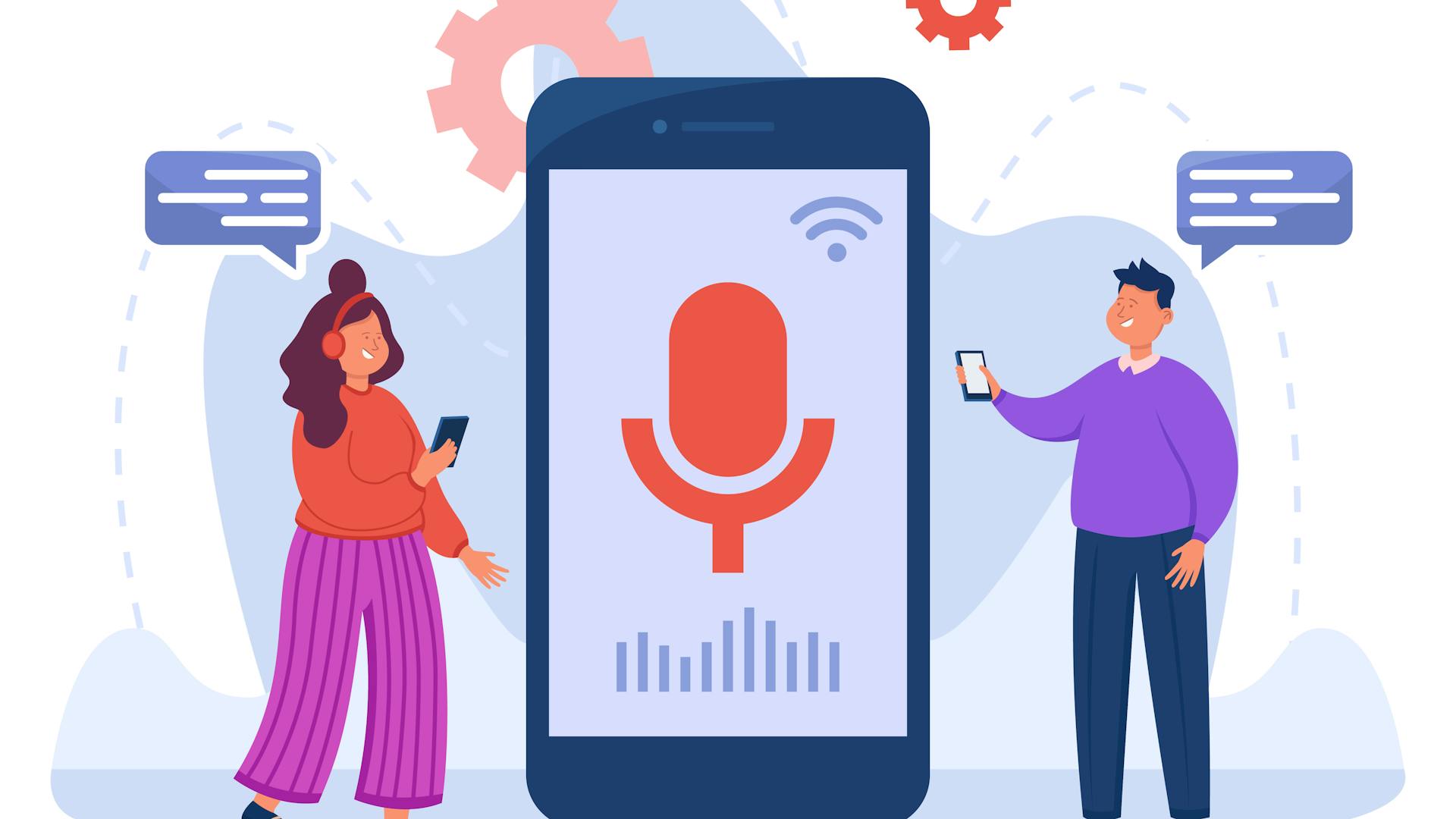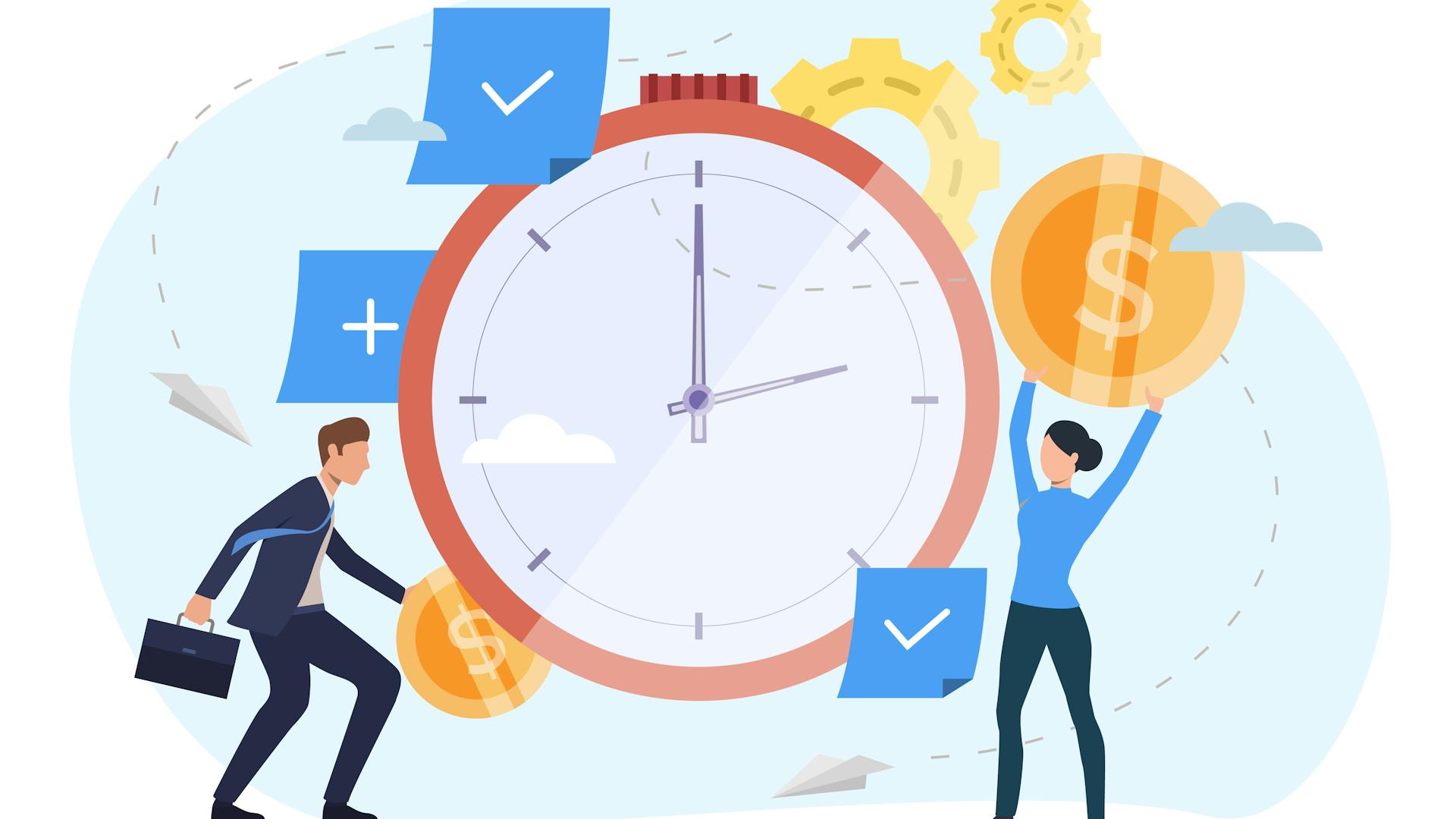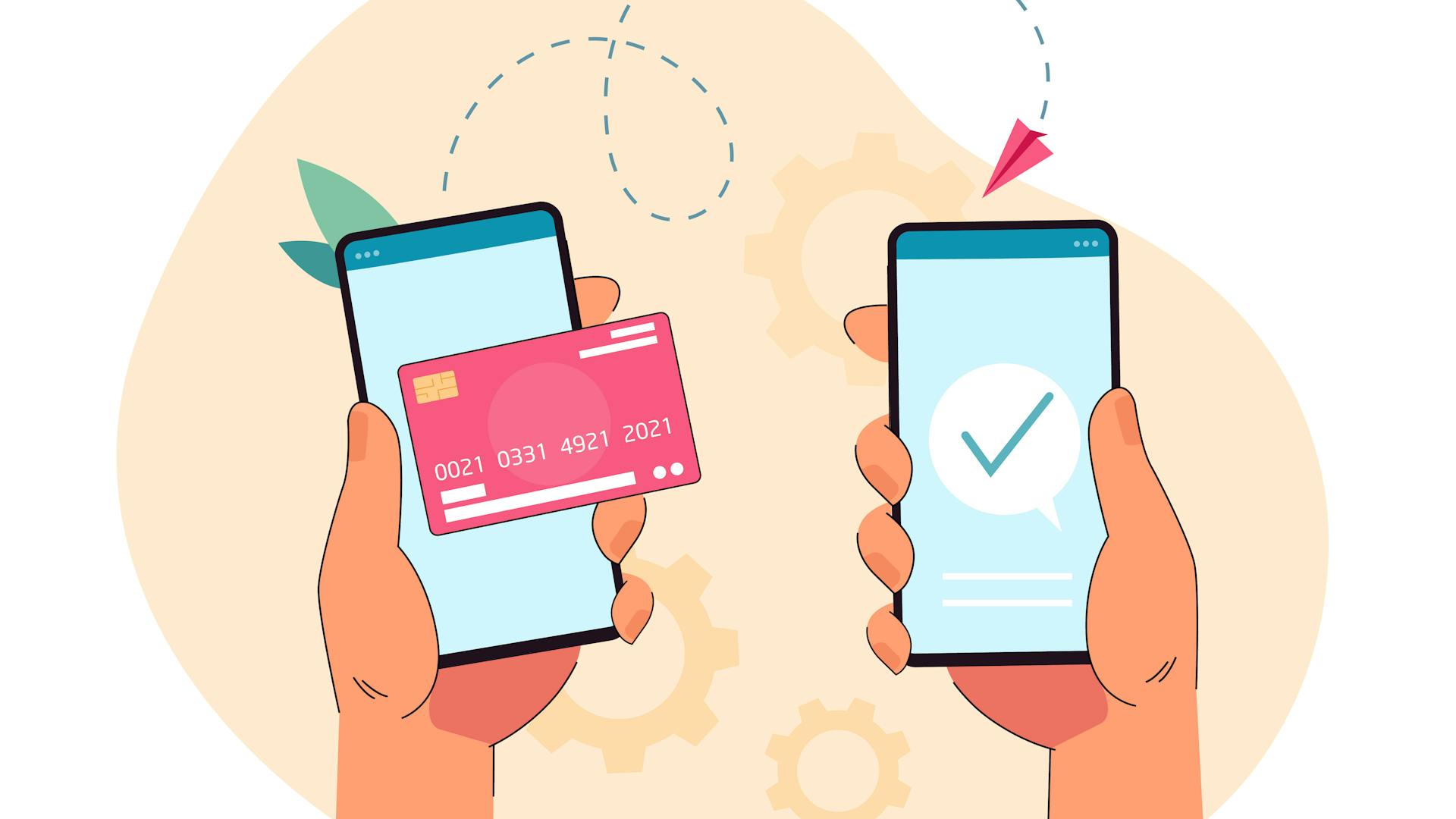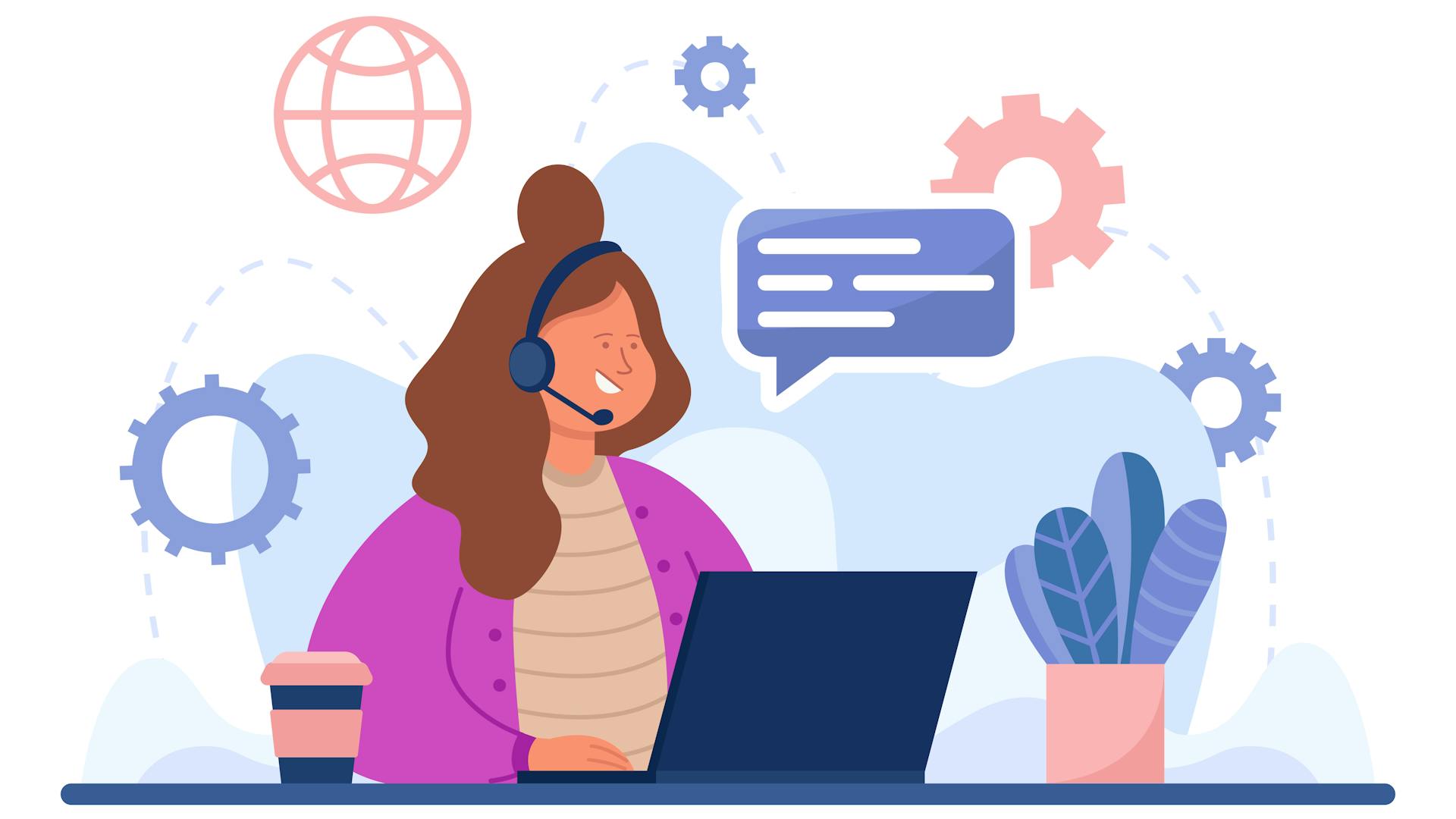Source: freepik.com
Do you know what the most crucial factor that determines the level of customer experience and satisfaction with a call center is?
It could be the speed of the service.
According to Salesforce research, 83% of customers expect to interact with someone immediately when they call your company.
In the past, this was the ideal reserved only for big businesses with huge customer support teams. Not anymore!
IVR call center allows you to compete with big businesses when it comes to providing an outstanding customer experience. In this article, we'll examine the advantages of IVR systems, provide tips for making the most out of them, but also explore their limitations and present more effective options so you can make an informed decision based on your needs.
What is IVR in a call center?
Interactive voice response (IVR) is an automated phone system for answering inbound calls. When a customer calls, the system offers multiple options for the next steps via the voice menu.
The purpose of the IVR system is to save time so that the customer doesn't have to waste time talking to multiple agents and can get straight to what they need.
Each item of the voice menu corresponds to a particular department or agent specialized in a given issue. Moreover, you can provide recorded responses to frequently asked questions and simple tasks that don’t require agents' supervision.
How does IVR work?

Source: freepik.com
IVR is based on combining existing phone systems with VoIP technology and automatic call distribution to create a call routing system.
When customers call your call center IVR, they get different options in the form of an IVR menu.
The system tracks the information about the customer and the option they've chosen and uses that information for routing calls to the right agent.
Some IVR tools are simple and use number-based rules to determine paths where they'll lead a particular customer. However, when it comes to the tools of the latest generation, IVR capabilities have significantly improved, and they often rely on artificial intelligence, machine learning and natural language processing.
What is an IVR menu?
IVR menu is the central part of the interactive voice response system. When you call the IVR call center, a recorded voice message greets you with a list of options to choose from, depending on what you need or who you want to talk to.
Remember the time you tried to contact the airline regarding the delayed flight? All you wanted was to get a solution quickly because you were in a hurry and the last thing you wanted was to explain your situation to multiple agents while they were transferring you from one to another.
And that’s where the IVR menu comes into play. Instead of having to explain your problem, the automated voice response read you dozens of different reasons for calling and you had to pick one that was the closest to your problem.
You probably did that by pressing one of the digits on your phone and then proceeded to talk to an agent or listen to pre-recorded guidelines.
The first generation of IVR systems was based on choosing the right option through the keypad. Every option was assigned a particular number and you had to press the number to be redirected to a specific department.
Modern IVR systems use natural language processing for speech recognition and conversational AI to understand customers better. You can use voice commands to choose the correct option, which is much quicker and leaves less room for mistakes.
IVR call center: Benefits
Introducing the IVR system has many benefits for your clients, customer support agents and you as a business owner. Here are the six you should be aware of:
Money and time saving

Source: freepik.com
In a recent HubSpot research, 51% of call center agents stated that their biggest challenge at work was not having enough time in the day to finish all tasks.
What if we told you there's a way to delegate part of their work without increasing operational costs? Many questions are repetitive and could easily be handled by an IVR system, and in many situations, there's no need to speak to human agents.
That way, you're lightening the load of your call center agents, leaving them with more time to focus on solving complex customer requests that require their knowledge and experience.
On the other hand, when it comes to simpler tasks and queries, the quality of service doesn't change whether you're getting your response from a live agent or pre-recorded instructions.
To illustrate this, FedEx managed to eliminate 11.000 daily calls to agents by implementing an IVR system. Can you imagine what they get to do with all that time they can now spend on improving their business processes? Maybe you’re not FedEx, but you could surely make use of all that extra time.
Increased FCR (First Call Resolution) rate
If there's one thing people hate more than waiting in a queue, it's being transferred from one agent to another multiple times. IVR systems could fix this issue and increase the chances of customers being transferred to the right agent on the first try.
Create a detailed IVR menu covering all the possible requests they might have. That way, you're setting yourself up for success in increasing the first contact resolution rate, which has two significant benefits:
- Improving customer satisfaction
- Reducing your agents’ workload and unnecessary loops
Agent and customer satisfaction
There are many reasons the IVR phone system is one of the best ways to increase customer satisfaction and your agents' productivity.
Your agents will be less stressed, allowing them to provide better customer service. As a result, the whole customer experience improves, as clients don't have to wait in a queue on the phone and if they want to talk to a customer service agent, there are more chances that the right agent will be available right away.
IVR also makes customer support accessible to vulnerable groups, from visually impaired people to older people or those who are simply not tech-savvy. An example from India shows how it made public health and farming more accessible to all community members.
24/7 availability
Customer expectations have changed due to the fast pace of living and information accessible online with just a few clicks. They want to be able to get information or solve problems whenever they want – whether it's a weekend or a national holiday.
As a small business, it can be challenging to meet these expectations and hire agents that will be available at all times, even after business hours. Luckily, this issue is easily solved by customer service automation and implementing an IVR system in your call center.
Customers will get the same level of service no matter when they call. This is not only great for emergencies and similar situations, but it also improves overall customer satisfaction.
Flexibility and scalability
IVR system could be a good solution for startups and small businesses that may not have enough means to hire many contact center agents but want to provide exceptional customer support to their clients.
They can also help you grow your online side hustle or e-commerce store at scale without increasing operational costs as the business grows. There are a lot of examples of solopreneurs building successful brands and people thinking the whole team was standing behind them, which made them perceive the brand more seriously from the beginning.
Regarding flexibility, you can put the IVR system in place within minutes and take it wherever you go, even if you work fully remotely and don't have an office.
Data insights

Source: freepik.com
IVR technology allows you to track and analyze a large amount of data about your customer calls that would otherwise be difficult to gather.
Some of the metrics you can track include:
- The average duration of the call
- First-time resolution rate
- Customer satisfaction
- Call abandonment rate etc.
Some IVR systems can automatically transcribe voice into text, which makes it easier to process and analyze data.
Others allow you to record incoming calls, which is not only good for analyzing data but can also help train new agents or serve as proof in a legal dispute with a customer.
IVR call center: Limitations
While IVR systems made a real revolution in the business world when they first appeared, they have some flaws according to today’s standards. Here are the main limitations of a standard IVR system:
- Limited type of interactions: Unfortunately, IVR can’t completely replace your human agents because it can provide only simpler, pre-recorded answers and can’t solve more complex issues.
- Lack of real dialogue: Despite introducing voice commands, most IVR solutions can’t understand your customer and process the information given. This leads to one-sided conversations that create room for misunderstanding and can take too much time.
- Too long/too complex menus: While IVR systems are primarily used to save clients’ time and avoid long queues, they often have too many options, which can confuse or irritate customers. This results in customers waiting too long to ask a simple question and possibly leaving.
- Limited control over customer experience: With IVR, you can control customer experience only to a certain extent. Unlike human agents, IVR can’t detect when a customer is irritated or upset and offer additional support to help fix things and avoid ruining your brand’s reputation.
IVR call center: Use cases
Here is how interactive voice response systems are used in different industries, from contact centers to conversational banking.
Skill-based routing
You can use an IVR platform to create a set of parameters that will allow your call center to automatically route calls to the most qualified agent. The simplest example would be a platform routing callers to an English-speaking or Spanish-speaking agent, depending on your customer's first language.
Of course, call routing can be more complex, depending on your industry and your agents’ expertise. The numerous benefits include:
- Saving time
- Boosting productivity
- Higher first-contact resolution rate
- Better overall customer experience
Self-service options
You can solve many simple tasks through self-service and many customers prefer to do it that way instead of waiting in a queue. The quickest way to reduce the repetitive workload of your agents is to include IVR self-service options whenever possible. Make sure instructions are clear and detailed.
Of course, not every customer will want to use them, so there should always be the option to switch to a human agent.
Check out an AI self-service solution from vTalk.
Personalized messages
According to Gartner, two-thirds of marketing leaders still struggle with personalization, even though we all know its importance, especially in today's competitive digital world. That's a shame because modern tools allow us to perform personalization at a scale, with only a few clicks, and make our customers feel special.
One way to do so is by integrating your IVR system with your CRM or other databases with your customers’ names. You can then personalize your outbound calls, which will start with the name of your customer instead of a generic greeting.
Another thing where personalization goes the extra mile is promotions that you can play during the waiting time. Instead of using the generic message promoting the same offer, you can promote different products and services, depending on the customer’s chosen option. That way, your message will be more relevant to your target audience, which can increase the conversion rate.
Payment and account information

Source: freepik.com
IVR payments are widely adopted in industries like banking, healthcare or e-commerce. They're a fast and safe way to process online payments without going through hoops, just like when using conversational AI for finance or insurance.
Contrary to a misconception, they're actually safer than many other online payment methods and there's less risk of fraud. Once you enter your credit card number, the interactive voice response will get back to you and repeat all the digits to ensure you've entered them correctly. That way, you're minimizing the risk linked to human error that's always possible.
Callbacks
Adding the callback option can be a good idea if you have to handle many inbound calls and the waiting time gets longer. After telling customers their position in the queue and how long they'll have to wait, you can offer them a choice: to keep waiting or be called back by one of your agents as soon as they're free.
IVR call center: Best practices
Here are some ideas that will help you improve customer experience when they call your contact center:
Keep the menu options simple and concise
The main IVR menu should be clear and straightforward. Try to keep the recording under 30 minutes; otherwise, you might annoy some customers.
If you have multiple options and departments, you can redirect your customers from there to different automated sub-menus.
Offer multiple languages
If you want to make your call center more accessible, translate your IVR menu and answers into languages your customers use. In the US, it's common to offer at least two options – English and Spanish, but you can add more languages depending on where your customers come from.
Some IVR solutions offer you the option to automatically translate text and speech into different languages, which might be worth considering when choosing the right IVR software if you have customers worldwide.
Make it sound human
Modern IVR systems allow you to personalize the voice to avoid sounding robotic. You can do so by having someone pre-record the answers to common customer queries or using text-to-speech technology.
It's a good idea to offer versions of voice agents both in a female and male voice so that customers can choose the one that suits them better.
Provide an option to connect directly to a live agent

Source: freepik.com
There will always be customers who prefer to talk to a live agent or need their help solving a particular issue. Don't make them go through hoops and always include the option to transfer them to an agent right away.
To increase their satisfaction and resolution rate, make sure to include different options in your IVR menu that will help them choose the most appropriate agent for their situation.
IVR technology automatically passes the information to a live agent so that customers don't have to repeat themselves over and over again, which causes frustration.
Give callers an accurate wait time and make use of it
People appreciate knowing how long they have to wait, so this option is a must-have if you can't provide service immediately. It's better to overestimate waiting time and delight your customers with excellent service than to underestimate the time and make them frustrated.
Here are some ideas on how to make use of the wait time:
- Fill the time with pleasant hold music
- If the waiting time is longer, you can add promotions of your other offers
- Update the callers at regular intervals about their queue position and how much longer they have to wait so they can choose whether they want to keep waiting or call again later
Regularly review your IVR menu
Regularly review your IVR menus to remove any incorrect or outdated information, such as services you no longer offer. For example, if you're using waiting time to promote products or services, ensure it's always your current offer.
Outdated messages may confuse your customer and even cause them to lose trust.
Also, listen to your recorded answers to frequently asked questions every few months and update them with relevant information.
IVR call center: How can vTalk.ai help?
Here's how you can use our voice assistant platform to help you with call center automation:
- You can provide 24/7 customer support and self-service
- You can automate both outbound and inbound calls
- You can create automated responses to frequently asked questions
- You can translate text and speech into multiple languages
- You can convert speech into text
- You can record customer calls and analyze the data to get to know your customers better and improve customer experience
But why would you choose vTalk.ai over a standard IVR solution? Because its use is much broader.
While a regular IVR can answer only simple questions, vTalk.ai can help you streamline many business operations, not just when it comes to having complex conversations with customers but also completing tasks otherwise done by human assistants.
Here are just a couple of examples:
- While standard IVR enables you only to create pre-recorder responses, vTalk.ai allows your customers to have a full-fledged dialogue, just like they’d do with a real agent. You can train the algorithm to recognize user responses and provide relevant answers to keep the conversation going until everything is solved.
- vTalk.ai is not just a simple voice assistant – it can complete multiple other tasks just like a human assistant: sending follow-up emails and SMS or making client appointments based on the free slots in your calendar.
- Regarding outbound sales calls, vTalk.ai can detect answering machines, which will stop the call instead of wasting your money on an unnecessary call.
Check AI for Outbound Calls solution from vTalk.
If you're still not sure why choose vTalk.ai over other interactive voice response systems, here are a few other things worth mentioning:
- With vTalk.ai you can set up your online call center within minutes. No coding skills are required, our tool is very intuitive and you won't have problems using it even if you're not tech-savvy.
- You can integrate IVR with emails and SMS to improve the customer service experience by providing support through different channels.
- Our platform is one of the most customizable on the market and your customers won't complain they have to deal with automated generic voice.
Conclusion
One thing is sure: while IVR revolutionized the business world when it appeared, there are better options today. If you want a solution that can conduct full-fledged complex conversations with your customers and provide relevant information based on the system data, you should opt for a virtual voice assistant.
If you're ready to set up your voice assistant platform, sign up to experience all the benefits firsthand.
FAQs
What is the advantage of IVR in a call center?
An interactive voice response system has many benefits compared to traditional call centers. It allows you to solve more customer requests in less time, saving time and money and improving customer satisfaction.
What is an example of IVR?
If you've ever called a bank or used conversational banking, you've probably interacted with IVR software. When you call their contact center, an automated message greets you, leading to the IVR menu where you're presented with different options. When you choose the option you want, by voice command or tying a number, your call is routed to the most suitable agent or pre-recorded response to your query.
Does IVR record calls?
It depends on your chosen IVR system provider, but most of them, like vTalk.ai, enable you to record inbound and outbound calls.
